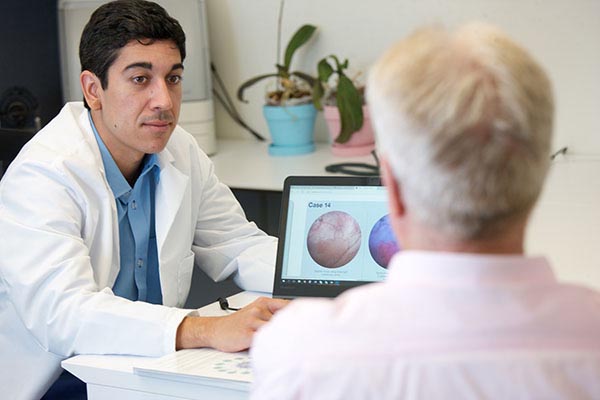Cystoscopy
What is cystoscopy?
 Cystoscopy is a procedure used to see inside your urinary bladder and urethra. It’s commonly used to diagnose bladder tumors, identify obstruction of the bladder and look for any abnormalities of the bladder and its lining.
Cystoscopy is a procedure used to see inside your urinary bladder and urethra. It’s commonly used to diagnose bladder tumors, identify obstruction of the bladder and look for any abnormalities of the bladder and its lining.
How long does the cystoscopy procedure take?
On average, a cystoscopy takes less than 1 minute.
How does the cystoscopy procedure work?
The urethra is a tube-like structure that carries urine from your bladder to the outside of your body. Before the procedure, you'll need to empty your bladder, and then you’ll be positioned on an examination table. Local anesthesia will be administered, and then a cystoscope is inserted through the urethra into the bladder. The cystoscope is a thin, lighted tube. Water or saline is then instilled into the bladder through the cystoscope. As the fluid fills the bladder, the bladder wall is stretched, giving your urologist a detailed view.
Under normal conditions, the bladder wall should look smooth, the bladder should be normal size, shape and position, and there shouldn’t be any blockages. If any tissue in the bladder wall appears abnormal, a small sample can be taken out through the cystoscope to be analyzed.
Where will the cystoscopy be done?
The procedure is usually performed as an outpatient procedure in a urology clinic or treatment room.
How will I feel after a cystoscopy?
After the cystoscope is removed, the patient’s urethra may be sore and they may feel a burning sensation for up to 48 hours. If this feeling lasts, you develop a fever, or your urine looks bright red, you should contact your doctor.

